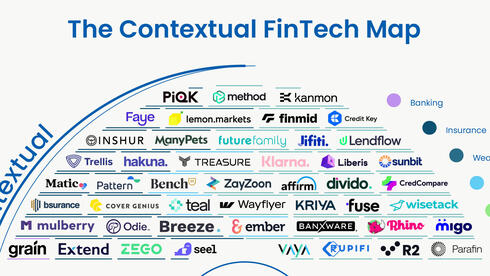
OpinionFrom the shadows of GenAI hype - The quiet rise of humanoids
Opinion
From the shadows of GenAI hype - The quiet rise of humanoids
“As we delve into the world of humanoids, it's crucial to recognize that we're on the precipice of a broader robotics and drone revolution. Breakthroughs in GenAI, vision systems, edge computing, and 5G penetration are poised to propel robotics into unprecedented realms,” writes Maya Hawlasewicz, Principal at Pitango Growth
The field of robotics has now entered a transformative era, propelled by the growing capabilities of generative AI (GenAI). This revolutionary technology is set to usher in a new wave of robotic innovation, enabling the creation of machines that exhibit exceptional adaptability and efficiency, such as the latest Figure 01 (the result of a partnership between OpenAI and Figure AI).
GenAI developments and edge computing
According to insights from Senior Research Scientist & Lead of AI Agents at Nvidia, Jim Fan, we stand on the brink of a robotics breakthrough comparable to the impact of ChatGPT. Recent strides in hardware and AI have brought in surprising developments in robotic Large Language Models (LLMs), exemplified by the launch of PalM-E and RT-2, alongside Tesla's end-to-end AI approach to humanoid development. The foundational technology for these LLMs traces back to Google's Transformer model, evolving into three distinct types: PaLM (Pathways Language Model), ViT (Vision Transformer), and RT (Robot Transformer). Google's journey culminated in the release of RT-2 in July 2023, boasting end-to-end AI capabilities and a 1.5-year R&D period for its movement database. Following suit, select Chinese robotic companies have introduced their own LLMs, while many U.S.-based humanoid robot OEMs leverage open-sourced models from industry leaders like OpenAI, Meta, and Google DeepMind.
Investments
In the dynamic landscape of humanoid robotics, major players are making substantial investments. Notably, OpenAI and Microsoft together with Nvidia and Jeff Bezos backed Figure AI, a humanoid robot maker, with an investment round of $675 million at a valuation of $2.6 billion. Figure AI aims to pioneer general-purpose humanoid robotics, targeting markets such as physical labor, consumer households, and space exploration. With the majority of these companies being private entities, significant investments are expected from OEMs, tech giants, and AI leaders like NVIDIA.
Current state and technological challenges
While GenAI has already revolutionized text and Natural Language Processing (NLP), its impact on computer vision is expected to drive advancements in autonomous machines and robotics. NVIDIA's significant updates to the Jeston platform for edge AI and robotics have overcome challenges posed by running popular GenAI models in the cloud. However, the journey forward is not without hurdles. Some of the key challenges that continue to shape the landscape include aspects of training and simulation, task definition in multimodal AI. Tomorrow’s successful startups and robotics companies should focus on developing new robot skills and automation tasks and leverage the full extent of available end-to-end development platforms.
There is also focus on kinetics, and design considerations for better efficiency and extended battery life to achieve 24h work coverage, weight adjustments.
Technology has received a significant boost from the GenAI developments; however, the Bill of Materials (BOM) for a robot remains very high, hovering around $250,000. Manufacturing costs contribute to 30-50% of the BOM, with linear and rotary actuators accounting for another 30-50%, hand joints at 8%, and chips at 2-3%. This high BOM results in elevated Average Selling Prices (ASPs), especially challenging when lacking scale. Addressing these cost challenges is pivotal, especially as Goldman Sachs predicts around a 40% decrease in the BOM this year, signaling potential relief in the cost structure for robotic innovations. The challenge of achieving optimal battery life becomes particularly crucial in realizing the full potential of continuous, round-the-clock operations.
Geopolitics of humanoids
China has emerged as a frontrunner in humanoid robotics, with companies such as UBTECH, Fouries Intelligence, ABIGOT, Unitree, and others leading the charge. Outside China, companies from the U.S., Canada, South Korea, and Japan, including Boston Dynamics, Agility Robotics, Tesla, Apptronik, and Sanctuary AI, are making significant strides. The geopolitical landscape suggests potential divergent approaches between China and American allies, influenced by considerations of production proximity.
Applications and use-cases
Humanoid robots find applications in logistics, auto manufacturing, hazardous tasks, disaster rescue, and emerging sectors like healthcare and elderly care. Care-related applications pose unique challenges due to the need for perfecting robot-to-human interactions, spontaneity, and decision-making independence. Industrial applications, especially in hazardous environments and labor-intensive jobs, offer a substantial Total Addressable Market (TAM). Goldman Sachs estimates global installations reaching around 3 million units by 2035, with a market valuation of approximately $37 billion.
Market projections and implications
Goldman Sachs predicts a base case of 1.3 million shipments per year, with a global install base of 3 million units by 2035. The estimated Average Selling Price (ASP) is around $29,000, with a Bill of Materials (BOM) accounting for 60% of ASP. For manufacturing use cases with higher specifications, the ASP may double to $60,000. Taking into account the potential cost savings, as humanoid robots can work 24/7 and have a lifetime of 5 years, a factory could see an annual cost of $6,000 per humanoid robot. In contrast, the average factory worker salary in the USA is $33,150 per year, providing an immediate return on investment (ROI).
Expanding horizons of robotics
As we delve into the world of humanoids, it's crucial to recognize that we're on the precipice of a broader robotics and drone revolution. Breakthroughs in GenAI, vision systems, edge computing, and 5G penetration are poised to propel robotics into unprecedented realms. The future landscape may witness diverse use cases ranging from autonomous window cleaning to battlefield AI pilots, along with applications in manufacturing, logistics, safety (Indoor Robotics - Pitango Portfolio). The convergence of these technologies, coupled with the game-changing aspect of cost efficiency, promises a profound transformation.
Maya Hawlasewicz is a Principal at Pitango Growth














